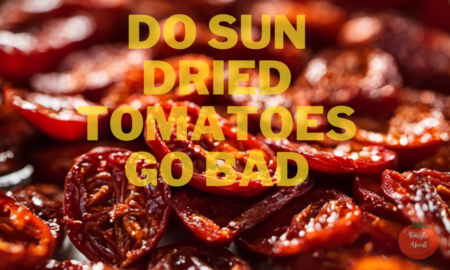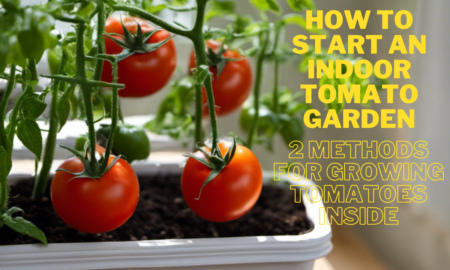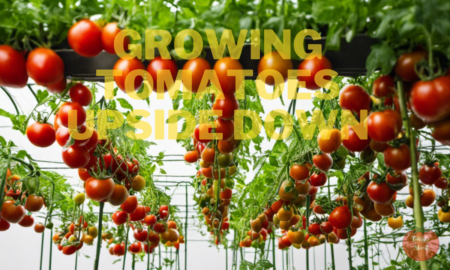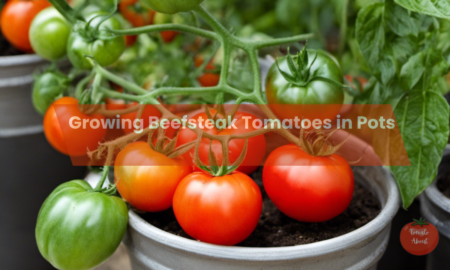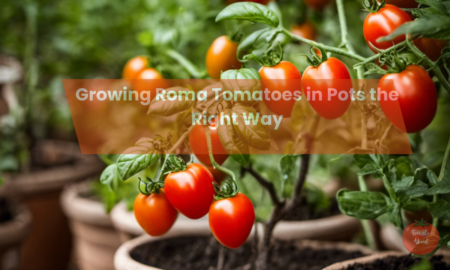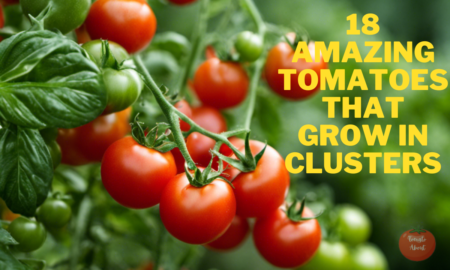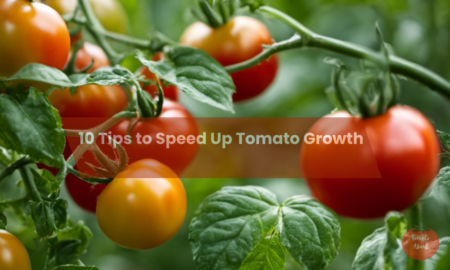Growing luscious, vibrant tomatoes is a fulfilling endeavor for gardeners of every skill level. With proper care and cultivation, it’s easy to harvest basketfuls of juicy tomatoes right from your backyard. This comprehensive guide will equip you with the key techniques and tomato-growing fundamentals every gardener needs to reap a bountiful tomato crop.
Getting Started with Tomatoes
Before digging in the dirt, some advance planning helps ensure tomato success:
Choose disease-resistant cultivars – Heirlooms may have incredible flavor but they are more vulnerable to diseases. Save those finicky varieties for future years once you have tomato growing mastered. Start out with tough hybrids that have better resistance bred right in.
Prep the planting site – Tomatoes demand lots of sunshine and fertile soil, so pick a spot accordingly. Where earlier crops like peppers, eggplants, potatoes, or tomatoes grew can harbor disease, so rotate planting sites annually.
Know your average last spring frost date – Tomatoes cannot withstand cold temperatures. Only set out transplants after all danger of frost has truly passed.
Start seeds or buy transplants – Growing from seed takes 6-8 weeks before outdoor planting. Buying sturdy young plants from a nursery makes it easier for novices to achieve fruit that first year.
With planning done, it is time to delve into the nitty gritty of getting those tomato plants into the soil and off to a vigorous start.
Getting Started: Tomato Types and Varieties
The first decision that will influence the success of your tomato patch is choosing which tomato varieties to grow. There are hundreds of tomato types to select from, but it helps to understand these major categories first:
Determinate Tomatoes – Also known as “bush” tomatoes, these plants stay compact at around 2-5 feet tall depending on the variety. Determinants stop growing once fruit sets on the top buds. As they concentrate their energy on the existing fruit, determinates produce abundant yields all at once in a 2-3 week harvest window. They thrive in small spaces and containers.
- Popular determinate varieties: Celebrity, Park’s Whopper, Roma
Indeterminate Tomatoes – Unlike determinates, indeterminate tomato vines keep growing taller and bearing fruit all summer long until killed by frost. Also called “vining” tomatoes, they can reach heights of up to 10 feet if supported properly. Indeterminates produce moderately throughout the season rather than in a single burst.
- Popular indeterminate varieties: Brandywine, San Marzano, Cherokee Purple
Heirloom Tomatoes – Heirlooms are treasured open-pollinated tomato varieties that seed savers have passed down for at least 50 years. While they take longer to ripen and yield less than hybrids, heirlooms are prized for their outstanding flavor, unique coloration, and history behind them.
- Popular heirlooms: Cherokee Purple, Mortgage Lifter, Brandywine
Hybrid Tomatoes – Hybrid tomatoes result from cross-pollinating two or more tomato varieties to produce desirable traits like uniform sizing, higher yield, disease resistance, and longer shelf life after picking. They are bred to produce well commercially rather than for flavor.
- Popular hybrids: Better Boy, Early Girl, Big Beef
Dwarf Tomato Varieties – Ideal for containers and small space gardens, dwarf tomatoes are compact determinate plants that grow no more than 3 feet high. They are easier to manage than standard-sized indeterminates. Look for container-specific dwarf varieties.
- Dwarf varieties: Tiny Tim, Patio Choice Yellow, Micro-Tom
For best results as a beginner tomato grower, select 2-3 top-rated varieties across types and maturity dates to ensure a steady harvest. A typical lineup includes one early variety like Early Girl, a midseason producer like Better Boy, and a cherry tomato like Sungold.
Caring for Tomato Seedlings and Transplants
The easiest way for home gardeners to acquire tomato plants is by purchasing seedlings locally or through mail order. Seek out stocky transplants around 4-5 inches tall, with no flowers or fruit present. Avoid seedlings with yellowing leaves or spindly, overgrown stems. Examine root balls and choose plants with healthy white roots.
When transplanting, carefully remove seedlings from pots, handling gently by a leaf rather than the fragile stem. Tease apart any roots that have become tangled or matted while in the container. Dig a hole slightly deeper and twice as wide as each root ball. Place seedlings at the same level they are growing in the pot, filling soil loosely around stems and watering deeply. Use compost tea or fish emulsion fertilizer to aid root growth after transplant shock passes in 1-2 weeks. Cover beds with floating row cover fabric to retain moisture while plants establish.
For a four-week head start, sow heat-loving heirloom or cherry varieties indoors in individual biodegradable containers, allowing at least 6 inches between seedlings. Move flats or pots to a sunny, sheltered area outside during the day to harden off for 7-10 days prior to transplanting. Harden off by gradually increasing outdoor time while protecting seedlings from direct sun and wind which causes shock. Bring tender plants indoors or under cover overnight until the transplant date arrives.
Selecting the Best Garden Site
Even more crucial than which tomato varieties you select is choosing an optimal outdoor site to cultivate them in. Tomato plants need at least 6 hours of direct sunlight daily along with nutrient-rich, well-draining soil to achieve their full plentiful potential. Here are tips for picking the best location:
Sun Exposure – Most vegetables thrive on 8+ hours of sunshine but tomatoes can manage with just 6. Track sunlight in candidate garden sites. For flowering and fruit production, select south-facing spots sheltered from winds.
Soil Prep – Enrich tomato beds with 2-4 inches of aged compost worked in thoroughly. Has soil tested to determine pH and nutrient levels? Tomatoes prefer a pH of 6.0-6.8. Add garden lime to acidic soils and soil sulfur to lower pH in alkaline soils. Mycorrhizae fungi boost nutrient absorption – mix granules into the soil at planting time.
Crop Rotation – Rotating vegetable site locations discourages soil-borne blights. Avoid planting tomatoes, potatoes, peppers, or eggplants in a spot used for these crops in the past 2 years. Track with garden maps!
Raised Beds – For earlier soil warm-up in spring, improved drainage, and root aeration, cultivate tomatoes in raised garden beds around 6-12 inches deep. Enclose supports or trellises within the raised bed for accessibility.
For bushy determinate tomatoes, allow 24-36 inches between plants in beds or mixed borders. Space vining indeterminates 36-48 inches apart so expansive root systems have room to spread.
Staking Techniques for Well-Supported Vines
Properly staking tomato plants keeps ripening fruit off the soil, reduces insect and slug damage, and improves air circulation between plants to deter fungal disease. Here are approaches to securely stake common tomato types:
Cages – Ideal for bushy determinate varieties under 4 feet tall. Use tall sturdy cages with 4-6 inch spacing between wires for easy picking access. Push legs 6 inches into the soil at the time of transplanting for stability.
Individual Stakes– Best for widely spaced indeterminate tomatoes. Install 5-7 foot wooden or metal stakes adjacent to transplants, sinking them 10-12 inches for anchoring. Tie the main stem to the stake using stretchable fabric ties every 12 inches as the plant grows.
Trellises – Often preferred for many plants in rows. Set trellis end posts first, then install crossbeams to support vertical or horizontal netting or strings. Weave ribbons or twine between sides in Figure 8 pattern around plants.
Fencing Support– Use 4-6 foot tall wire fencing, chain link panels, hog panels, or concrete reinforcing mesh positioned behind a single row. Space panels 2 feet apart and tie plants directly through the open grid.
Cordon Training – Train one main indeterminate vine stem horizontally 15-18 inches off the ground supported by sturdy stakes. Prune side shoots for vertical flowering. Optimal light exposure and easy picking!
Watering
Consistent soil moisture is imperative for prolific tomato growth and fruiting. Tomato roots penetrate deeply but need ample water delivered regularly. Select drip irrigation over sprinklers to conserve water. Apply mulch after the soil is warm to regulate temperature and retain moisture while suppressing weeds.
Seedlings – Initially fragile transplants require gentler but still deep watering by hand. Monitor for the first weeks until extensive roots are established, adjusting for weather. Add a floating row cover for moisture retention.
Mature Plants – Established tomatoes utilize 1-2 inches of water weekly, soaking soil 8-10 inches deep. Allow soil to partially dry out around 4 inches deep before rewatering. Avoid water stress during flowering and fruiting. Hand water or use drip irrigation with timers.
Signs of Underwatering – Drooping leaves recovering in the evening, poor flowering, yellow lower leaves, small fruits with low production. Soil pulls away from the sides of the beds. Rehydrate by watering deeply – don’t rely on rain.
Signs of Overwatering Issues – Wilting leaves not improving overnight, leaf spots, slugs, tomatoes cracking, or afflicted with blossom end rot. Allow soil to dry somewhat before the next watering.
Fertilizing for Nourished, Productive Plants
Tomatoes are hungriest while flowering and fruit production ramps up. Work compost and organic dried fertilizer into beds before planting, then supplement monthly with liquid feeds. Avoid high nitrogen fertilizers which fuel extensive vegetation over fruit. Good options include:
Compost/Compost Tea – Mix 1-2 inches of well-finished compost into beds pre-planting. Side dress with another helping around the blossoming stage. Steep compost tea bags to create mineral-rich drenches and foliar feeds.
Worm Castings – This byproduct of vermicomposting offers a wealth of nutrients in a fast-absorbing natural form, preventing many deficiencies. Either mix castings into beds or brew castings “tea”.
Organic Granular Fertilizers – Espoma Tomato-Tone or Jobe’s Organic Vegetable Granular Fertilizer blended into soil at planting gradually releases nutrition for 6-8 weeks. Reapply monthly by sprinkling around drip lines.
Liquid Tomato Feeds – Look for all-natural formulas listed as safe for organic gardens. Apply every 2-3 weeks according to label to nourish plants during key stages. Liquid kelp extract is especially beneficial.
Wood Ashes – Spread 1-2 cups of wood ash per 25 sq ft around plants every 4-6 weeks for potassium, phosphorus, and calcium (though don’t overdo it). Avoid using ashes from briquettes or colored paper.
Learn each variety’s nutrient needs and stick to a consistent fertilizing schedule for satisfied, prolific tomato plants.
Preventing Issues with Tomatoes
When cultivated with care in a well-prepared garden site, tomato plants are generally resilient and unaffected by serious issues, beyond minor pests. However, here are tips for averting potential tomato plant problems:
Defending Against Pests – Flea beetles chew tiny holes in emerging leaves while hornworms are large green caterpillars devouring foliage. Hand pick off larger pests and control tiny ones by spraying leaves with neem oil or insecticidal soap following label rates. Row covers also deter insects.
Dodging Diseases – Fungus problems like early blight, late blight, verticillium or fusarium wilts thrive in damp conditions. Improve garden drainage and airflow while reducing moisture on leaves. Stake plants for air circulation and avoid working amidst wet plants. Remove infected plants immediately to prevent spreading spores. Apply organic fungicides as preventatives if susceptible varieties are grown.
Preventing Blossom End Rot – These sunken brown spots on tomato bottoms are caused by erratic watering leading to calcium deficiencies made worse by extreme heat. Maintain diligent consistent moisture levels. Spray foliage with calcium supplements if soil nutrients test adequate. Choose tolerant varieties like Floridade.
Stopping Cracks and Scars – Similar to end rot, cracks around stems and shoulder scars are also triggered by inconsistent soil moisture which leads to extremely fast growth. Water tomato plants frequently and deeply. Mulch beds to stabilize conditions and consider drip irrigation.
Improving Poor Fruit Set – When tomato blooms don’t form fruit, the culprits can be temperature extremes, overfertilization, drought stress, or inadequate pollination. Rule out growing issues first. Then consider gently shaking vines midday to disperse pollen if bees seem scarce.
Pollinating Flowers for Maximized Fruit Set
Tomatoes largely handle their own pollination needs thanks to the natural shaking from wind and plant growth. However, gardeners can further enhance fruit production by assisting with pollen transfer.
Slightly shake unsupported plants – Agitate vines without stakes or cages once a week when tomato plants begin flowering. Mimic the effects of natural wind.
Improve hive placement – Ensure bee boxes sit no further than 100 yards from tomato plants so these efficient pollinators have easy access.
Attract pollinators – Grow herbs and perennials that attract pollinating insects. Dill, borage, calendula, salvia, and cosmos give bees and other pollinators forage and habitat.
Consider pollinating by hand – Use a soft brush or cotton swab to sweep pollen from one flower’s anthers to another’s stigma if plants set far fewer fruit than flowers.
Harvesting Ripe Tomatoes for an Abundant Crop
Check tomato plants daily once fruits begin reddening. Gently twist to remove ripe tomatoes with some stems attached. Store harvests at room temp out of sunlight. Avoid refrigerating raw tomatoes which damage texture and flavor – let them ripen on the counter instead!
For the highest yields, promptly pick tomatoes as they ripen to keep vines producing more fruits. Overripe tomatoes left on neglected vines signal to slow fruiting. Care for plants attentively and harvest regularly for a fulfilling bountiful tomato crop.
Saving Tomato Seeds
Each tomato contains dozens of seeds for replanting more free plants the following year. Scoop seeds and gel onto a plate. Ferment 1-4 days, stirring daily until coating fully separates and sinks from seeds. Rinse debris off. Dry seeds then store them in an envelope in your refrigerator until the next planting season.
Follow this comprehensive growing guide to understand tomato needs and master cultivation techniques. With close attention to tomato best practices, both novice and seasoned gardeners alike can yield prolific harvests from tomato patches each warm season for outstanding garden-fresh eating!

